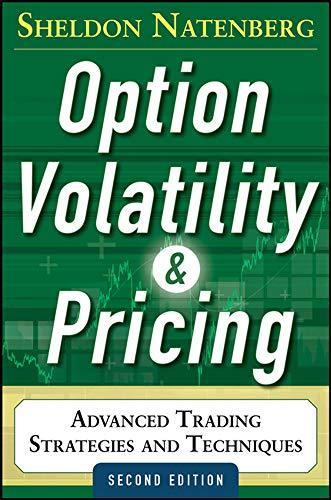Question
An Executive Stock Option Model Because of the feature of the freeze-out period, (also known as vesting) period, employee options are often modeled as forward
An Executive Stock Option Model
Because of the feature of the freeze-out period, (also known as vesting) period, employee options are often modeled as forward stating options. A forward start option with time to maturity T starts at-the-money or proportionally in or out-of-the money after a known elapsed time t in the future. The strike price is set equal to a positive constant a times the asset price S after the known time t. Rubinstein (1990) uses the following formula for the call option:
c = Se(b-r)t (e(b-r)(T-t)N(d1) - ae-r(T-t)N(d2))
where
d1=(In(1/a)+(b+(Vol2/2)(T-t)) / (Vol x SQRT(T-t)),
d2=d1-Vol x SQRT(T-t)
Consider an employee who receives a call option with forward start three months from today. The options start 10% out-of-the-money, time to maturity is one year from today, the stock price is 60, the risk-free interest rate is 8%, the continuous dividend yield is 4%, and the expected volatility of the stock is 30%. In other words, S = 60, a = 1.1, t = 0.25, T = 1, r = 0.08, b = 0.08-0.04 = 0.04, and Vol = 0.30.
Build a spreadsheet model to calculate the call price with panels for inputs and panels for the model, similar to the Black-Scholes type analytical models. Submit your spreadsheet model. Use interim calculation steps, such as d1, d2, N(d1) and N(d2), before you reach your final valuation of the option. Round up your final result in $0.01.
Step by Step Solution
There are 3 Steps involved in it
Step: 1

Get Instant Access to Expert-Tailored Solutions
See step-by-step solutions with expert insights and AI powered tools for academic success
Step: 2

Step: 3

Ace Your Homework with AI
Get the answers you need in no time with our AI-driven, step-by-step assistance
Get Started


